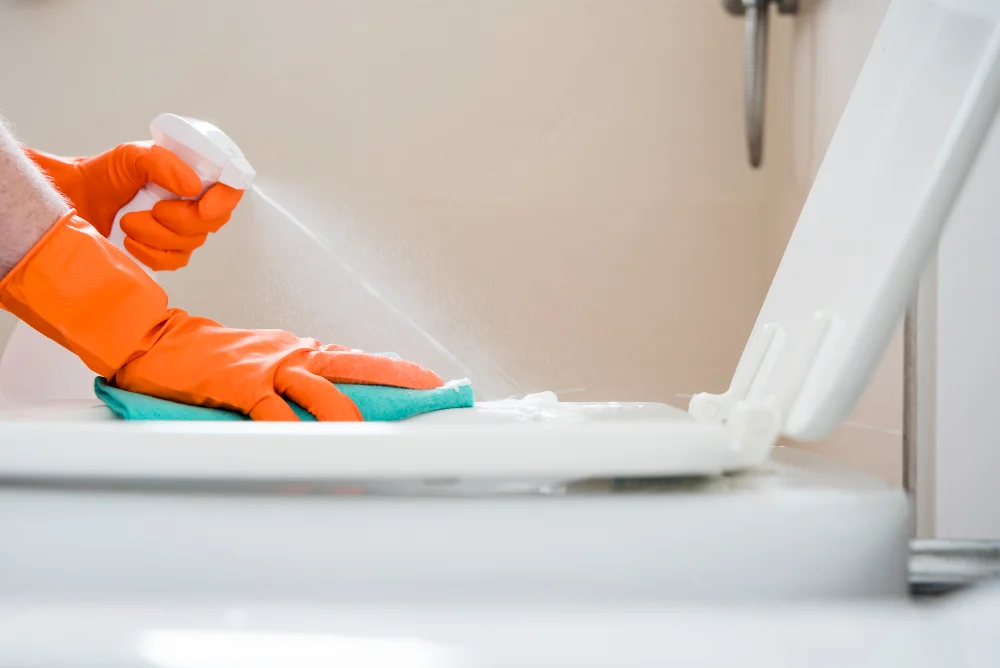Keeping your toilet bowl clean is essential for maintaining a hygienic and pleasant home environment. Toilet bowl cleaners are designed to make this task easier, but improper use can lead to inefficiency, damage, or even health risks. Here, we’ll explore the most common mistakes people make when using toilet bowl cleaners and provide tips to ensure you’re using them effectively and safely.
1. Using Too Much Cleaner
One of the most frequent mistakes is overusing toilet bowl cleaner. Many people assume that more product equals better results, but this is not the case. Overusing cleaner can lead to:
- Wasting product: You’ll end up spending more money replacing cleaners unnecessarily.
- Difficulty rinsing: Excess cleaner may leave behind residue that requires additional scrubbing or rinsing.
- Environmental harm: Overuse contributes to chemical runoff, which can harm aquatic ecosystems.
Solution: Follow the manufacturer’s instructions regarding the amount of cleaner to use. Usually, a small amount is sufficient to achieve a sparkling clean bowl.
2. Skipping the Instructions
Toilet bowl cleaners come with specific instructions for a reason. Skipping these can lead to improper use and suboptimal results. For instance, some products require a certain amount of time to sit before scrubbing, while others might be unsuitable for certain surfaces.
Solution: Always read and follow the instructions on the product label. This ensures you’re using the cleaner as intended and getting the best results.
3. Mixing Cleaners
Mixing different cleaning products might seem like a good idea to enhance cleaning power, but it’s a dangerous practice. Combining certain chemicals, such as bleach and ammonia, can produce toxic gases that are harmful to your health.
Solution: Stick to one cleaning product at a time. If you’re switching cleaners, thoroughly rinse the toilet bowl to remove any residue from the previous product.
4. Ignoring Safety Precautions
Toilet bowl cleaners often contain strong chemicals that can irritate your skin, eyes, or respiratory system. Failing to use protective measures can lead to unnecessary exposure.
Solution:
- Wear gloves to protect your hands from harsh chemicals.
- Ensure proper ventilation by opening a window or turning on an exhaust fan.
- Avoid leaning too close to the toilet while applying cleaner to prevent inhaling fumes.
5. Not Allowing Enough Dwell Time
Many people apply toilet bowl cleaner and immediately start scrubbing. This doesn’t give the product enough time to break down stains, bacteria, and mineral deposits.
Solution: Allow the cleaner to sit for the recommended time, usually 5-10 minutes, before scrubbing. This ensures the product works effectively and reduces the need for excessive scrubbing.
6. Using Abrasive Tools
Using abrasive tools like metal brushes or scouring pads might seem effective, but they can damage the surface of your toilet bowl. Scratches can make the surface more prone to staining and harder to clean in the future.
Solution: Use a toilet brush with soft bristles or non-abrasive cleaning pads to protect the bowl’s surface while effectively removing stains.
7. Neglecting the Rim and Other Areas
Many people focus solely on the bottom of the toilet bowl and neglect other areas like the rim, under the seat, and the exterior of the toilet.
Solution: Clean the entire toilet, including:
- Under the rim where bacteria and grime accumulate.
- The seat and lid for a complete clean.
- The exterior to remove dust and splashes.
8. Overlooking Hard Water Stains
Hard water stains are common in areas with high mineral content in the water. Regular toilet bowl cleaners may not be effective against these stubborn stains.
Solution: Use a cleaner specifically designed for hard water stains or a natural alternative like vinegar and baking soda. Apply the solution, let it sit, and scrub with a toilet brush.
9. Flushing Too Soon
Flushing immediately after applying toilet bowl cleaner can wash away the product before it has a chance to work.
Solution: Apply the cleaner, let it sit for the recommended time, and then scrub before flushing. This allows the cleaner to break down stains and bacteria effectively.
10. Ignoring Regular Maintenance
Waiting until the toilet bowl is visibly dirty before cleaning can make the job more challenging. Stains and bacteria build up over time, requiring more effort to remove.
Solution: Clean your toilet bowl regularly, at least once a week, to prevent buildup and maintain hygiene.
11. Using Harsh Chemicals Too Frequently
While harsh chemicals can be effective for tough stains, using them too often can damage your toilet bowl and plumbing.
Solution: Reserve strong chemical cleaners for occasional deep cleaning. For regular maintenance, use milder products or natural alternatives.
12. Forgetting About the Brush
A dirty toilet brush can spread bacteria and grime instead of cleaning effectively. Many people overlook the importance of keeping the brush itself clean.
Solution:
- Rinse the brush thoroughly after each use.
- Disinfect it regularly by soaking it in a bleach solution or hot, soapy water.
- Replace the brush periodically to ensure it remains effective.
13. Using the Wrong Cleaner for Your Toilet Type
Different toilets may require specific types of cleaners. For instance, porcelain toilets can handle most cleaners, but delicate materials like stainless steel or colored finishes may require gentler products.
Solution: Check the material of your toilet and choose a cleaner that’s safe and effective for that specific type.
14. Not Cleaning the Flush Handle
The flush handle is one of the most frequently touched parts of the toilet, yet it’s often neglected during cleaning.
Solution: Wipe down the flush handle with a disinfectant wipe or spray during each cleaning session to eliminate germs.
15. Overlooking Eco-Friendly Alternatives
Many conventional toilet bowl cleaners contain harsh chemicals that can harm the environment. Ignoring eco-friendly options is a missed opportunity to reduce your environmental footprint.
Solution: Look for biodegradable or plant-based cleaners. Alternatively, use natural cleaning solutions like vinegar, baking soda, or lemon juice.
16. Failing to Store Cleaners Safely
Improper storage of toilet bowl cleaners can pose risks, especially in households with children or pets.
Solution:
- Store cleaners in a secure, high place out of reach of children and pets.
- Ensure the lids are tightly closed to prevent spills.
- Keep products in their original containers to avoid confusion.
17. Ignoring Residue Buildup
Over time, some cleaners can leave behind a residue that dulls the toilet bowl’s shine and attracts dirt.
Solution: Rinse the toilet thoroughly after cleaning and periodically use a cleaner designed to remove residue.
18. Not Addressing Odors
A clean toilet doesn’t always mean a fresh-smelling one. Many people overlook lingering odors that can make the bathroom less inviting.
Solution: Use a cleaner with a pleasant scent or add a few drops of essential oil to the toilet bowl after cleaning. Regularly clean the toilet’s surroundings to eliminate odor sources.
19. Relying Solely on Cleaners
While toilet bowl cleaners are effective, they’re not a substitute for good cleaning habits. Relying solely on cleaners without proper scrubbing or maintenance can lead to subpar results.
Solution: Combine cleaners with manual scrubbing and regular maintenance to keep your toilet in top condition.
20. Not Checking for Damage
Some cleaners can corrode or damage certain parts of your toilet, such as seals, gaskets, or coatings. Ignoring this can lead to costly repairs.
Solution: Inspect your toilet periodically for signs of damage and avoid using overly harsh or abrasive cleaners that may cause wear and tear.
Conclusion
Using toilet bowl cleaners effectively requires attention to detail and adherence to best practices. By avoiding these common mistakes, you can ensure a cleaner, more hygienic bathroom while protecting your toilet, health, and the environment. Regular maintenance, proper product usage, and attention to safety will keep your toilet sparkling clean and your household running smoothly.

